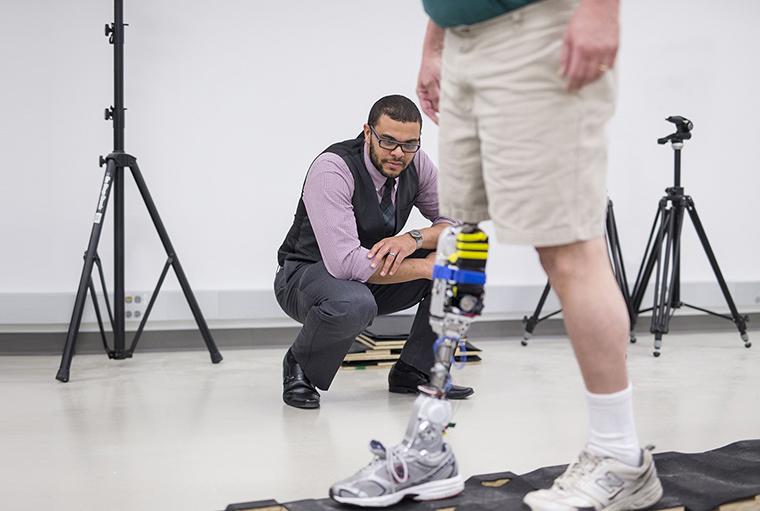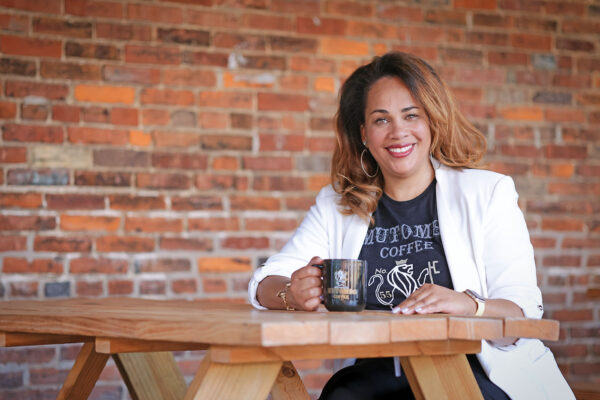Karl Zelik, BSBME ’06, MSBME ’07 (biomedical engineering), associate professor of mechanical engineering, of biomedical engineering and of physical medicine and rehabilitation at Vanderbilt University, grew up learning, through play, about the extraordinary power and the hard limits of the human body.
“I grew up in a family of four boys,” Zelik says. “And I was very reckless with my body as a kid. I broke a lot of bones and got a lot of stitches. I was always pushing the limits. And I suppose while going to college I discovered that there was a much safer and academic way of doing that through biomedical engineering.”
The discovery came about while Zelik was an undergraduate, doing research in a cardiac bioelectricity lab (all the while still pushing his body in track, where he competed in the long jump and triple jump). Then after graduating, he worked at a medical device company on the West Coast.
“I discovered that a lot of the really cool innovation in the cardiac defibrillator space was by these teams of computer scientists who had a lot of leeway to explore new cutting-edge algorithms to improve the device,” Zelik recalls. The same was not true on the mechanical development side, where major changes to a device required it to go back through the regulatory process.
“I wanted to take what I liked about the medical device area, but see if there was something more mechanically-focused and yet had more freedom to innovate,” he says. “That’s what ultimately drew me over to the side of biomechanics, prosthetics and exoskeletons.”
Zelik went on to earn a doctorate from the University of Michigan. When he started his research lab at Vanderbilt University in 2014, he focused on lower-limb prosthetics. In his lab, he and his graduate students studied ambulatory movement, doing things like researching how people use their toes during walking or use reflexes to recover balance after tripping, which then inform how to design better prosthetic limbs. His lab’s proximity to the Vanderbilt Medical Center meant that he had constant access to patients and clinicians.
“I started noticing I had more back pain and began thinking, ‘surely, there must be some kind of assistive technology that could help relieve strain off my back.’ ”
Karl Zelik
But then Zelik had kids.
“I started noticing I had more back pain and began thinking, ‘surely, there must be some kind of assistive technology that could help relieve strain off my back.’” Lifting a 25-pound box (or kid) causes your back muscles to generate over 500 pounds of force. So low back injury and soreness are common complaints not just for toddler parents, but for people in physically demanding industries who do repetitive lifting.
After looking into the issue, Zelik found that the only available assistive technologies for his problem were ineffective back belts, bulky rigid exoskeletons, or expensive robotic systems that could cost $20,000.
“My wife wouldn’t let me spend $20,000 on a wearable robot,” Zelik says with a laugh. “Nor could we afford that, and the alternatives had either been debunked or wouldn’t fit into my life.” So Zelik started exploring if there was a way to make an exosuit (soft exoskeleton) that was slimmed down, yet helpful and less expensive.
The result is HeroWear, which Zelik co-founded in 2019. The company makes 3-pound exosuits whose assistance can be turned on and off. When turned on, they can reduce the strain on the back muscles by 75 lbs. or more when lifting or leaning. Many professions could benefit from this assistive technology, including doctors who stand and lean over for long periods of time during surgery, movers, warehouse and agricultural workers, and those in construction. Not surprisingly, the HeroWear Apex Exosuit is already being used in 15 countries at over 100 different work sites.
For Zelik, creating the exosuit dovetails with another one of his interests as a boy: superheroes. He wrote in an article for The Conversation (also published in Fast Company and by the AP): “Professionally, I’ve long had my eye on bringing wearable technology like Black Panther’s vibranium supersuit off the screen and into real life.”
And Zelik’s technology gives extraordinary power (and relief) to everyday heroes.



